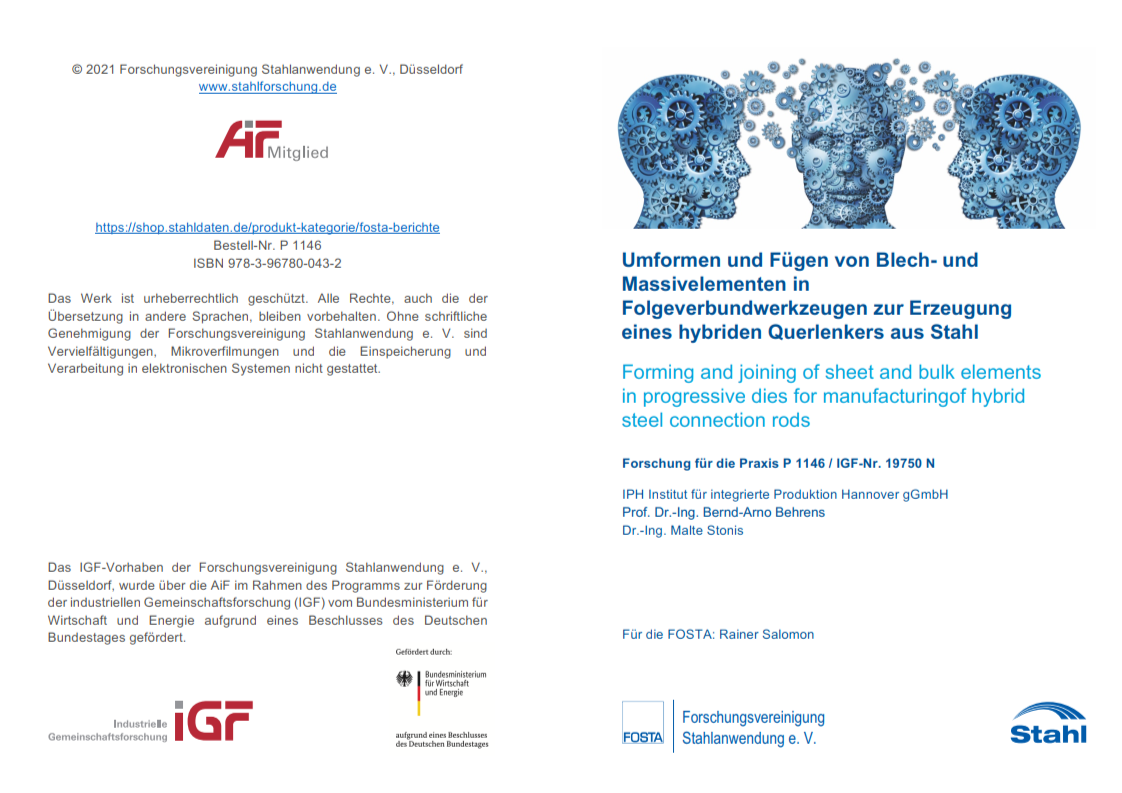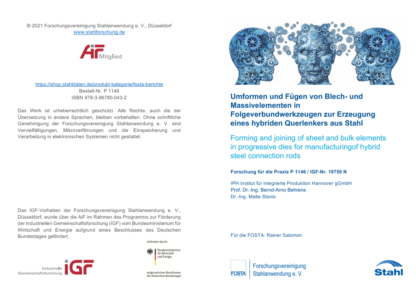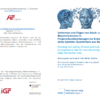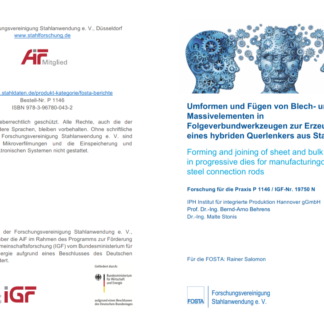Description
P 1146 – Forming and joining of sheet and bulk elements in progressive dies for manufacturing of hybrid steel connection rods
Goal of the project is to manufacture a hybrid part which consists of solid and sheet elements with a geometry like a wishbone. Therefore a 3-pont wishbone geometry has been developed and investigated via simulation and field trials at the IPH. This was accomplished with three different tool combinations. The first stage describes the beading and perforating, in which the sheet metal element is perforated and deep-drawn. The bead serves as a measure to increase the structural strength of the hybrid component. In the second stage, hybrid forging takes place, in which three solid elements made of steel are connected with a sheet metal element via force and form closure, also made of steel, from the first stage. In the third stage, the wishbone geometry is cut out of the sheet geometry with the usage of a shear cutting process.
The most significant parameters for a hybrid connection with force and form closure are the forming temperature as well as the strength and the shrinkage behaviour of the materials used. The material pairings investigated in the project were 42CrMo4, X2CrNi18-9 as the solid and S700MC, S355J2 as the sheet material. The combination of parameters has proven to be particularly advantageous for producing both force and form closure with the higher strength sheet material S700MC, 42CrMo4 as solid material and a forming temperature of minimum 1200 °C. This statement was supported both theoretically and practically. The usage of X2CrNi18-9 has usually shown form closure only, as the shrinkage of the stainless steel during cooling counteracts a force closure connection. A lower strength sheet material can lead to a displacement from the forming zone by the material flow of the solid material during the forming process. The combination of stainless steel with S355J2 as sheet material with forming temperatures of 900 °C have repeatedly resulted in no connection or a connection of insufficient quality.
Published in:
2020
Authors:
Prof. Dr.-Ing. B-A. Behrens, Dr.-Ing. M. Stonis




